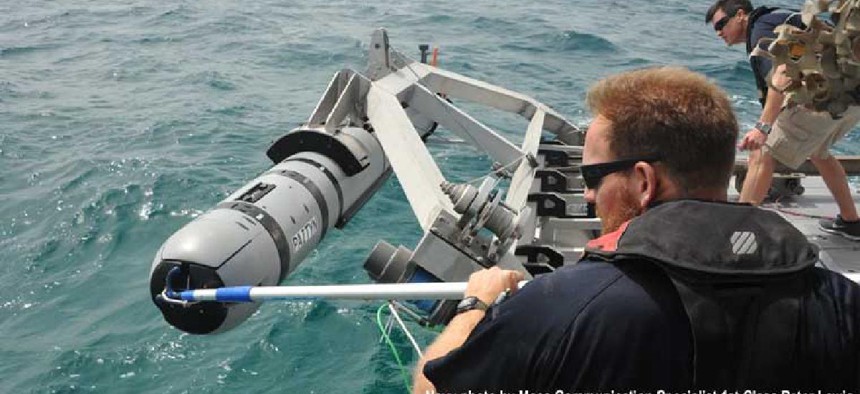Can digital twins add value to undersea drone missions?


Connecting state and local government leaders
DARPA wants to know how digital twins of unmanned undersea vehicles can overcome communication challenges to improve fleet operations.
The Defense Advanced Research Projects Agency wants to know whether digital twin technology can be effective for unmanned undersea vehicles. DARPA issued an Aug. 26 presolicitation for the Defining and Leveraging Digital Twins in Autonomous (DELTA) undersea operations program to help it learn how digital twins can add value to UUVs.
Digital twins, which are virtual representations of a physical model or system, are increasingly used in government. The Naval Surface Warfare Center, for example, has experimented with digital twin ships to help maintenance engineers more quickly identify damage, corrosion and alignment issues and be more proactive on the maintenance. The technology is also used to mirror weapons systems and support the maintenance and upgrades of aircraft, engines and government facilities, according to DARPA.
Digital twins are increasingly featured in autonomous operations in the private sector, but the military has been hesitant to “cede full control to autonomous agents,” even though they add a “higher level of fidelity to existing models and enable real-time prediction of a system’s status,” DARPA said.
Although the Navy invests heavily in UUVs as part of its shift to a more distributed fleet architecture, digital twins present unique challenges.
Traditionally, twinning applications rely on continuous communication between the digital twin and the deployed system, which is significantly more difficult when the vessel is underwater where intermittent signals and low-data transfer rates hinder communication. DELTA aims to explore how commanders can better understand what their unmanned assets are doing when communications are limited, DARPA said.
DARPA is also interested in learning how digital twins can add value to particular missions that involve both single UUVs and hundreds of underwater drones and whether digital twins should be housed at a central operations center, on an individual UUV or both.
Additionally, DELTA seeks insights on return on investment for undersea digital twins so military leaders can understand the size and scale of UUV deployments required to see operational advantages across the fleet.
The three-phase program will initially focus on researching the feasibility of this technology, and the information gained will help produce a fully functional prototype. DELTA will also explore dual-use applications.
Proposals for the Small Business Innovation Research opportunity are due Oct. 12. Read the full solicitation here.




